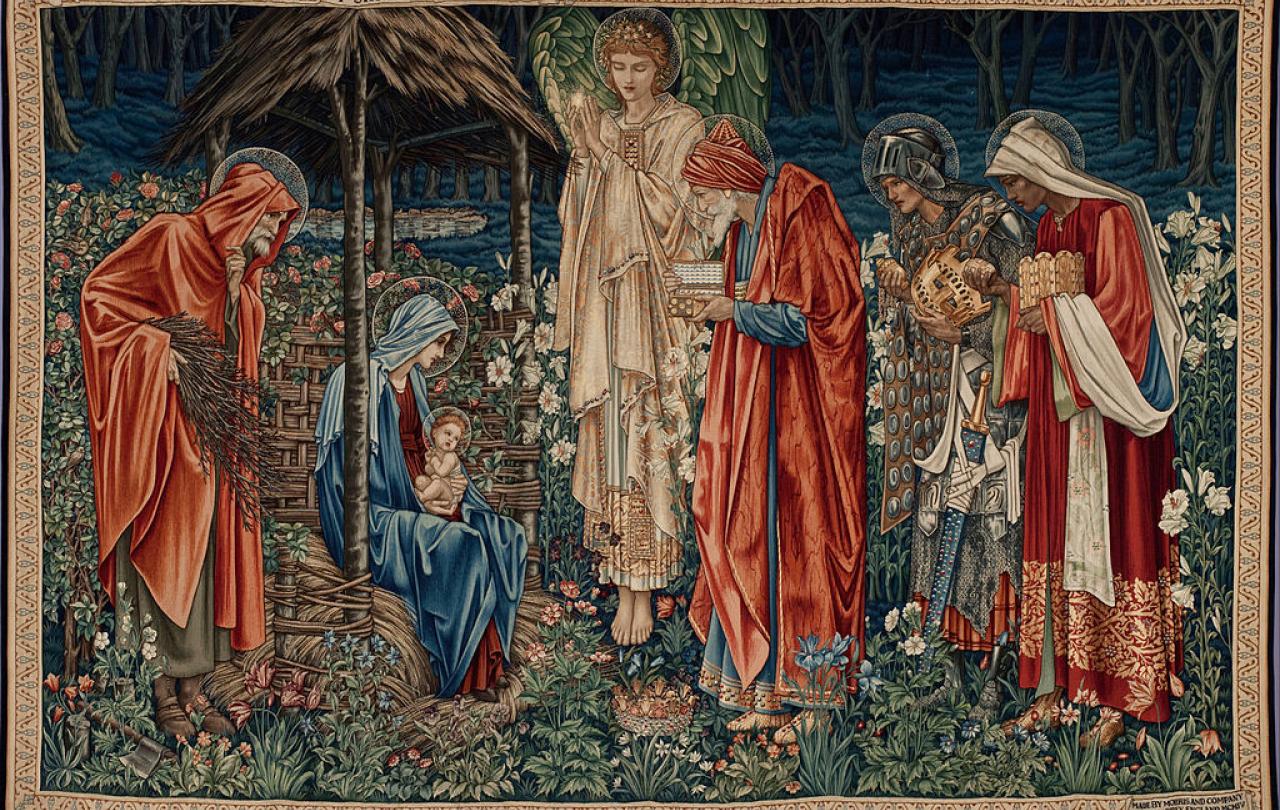
“So what’s this big news, then?”
“We’ve been given our parts in the Nativity Play…[GASP]…and I’m the lobster!”
“The lobster?”
“Yeh!”
“In the Nativity Play!?”
“Yeh. First lobster.”
“There was more than one lobster present at the birth of Jesus?”
“Duh!”
I love this little exchange from Love Actually. Emma Thompson’s mother must be expressing the surprise of parents up and down the country for the last twenty years or so. When I was at primary school there was no doubt that when December rolled around, we would do a straight-down-the-line nativity play. As I’ve gotten older, I’ve noticed that more and more schools have been experimenting: a lobster here, an octopus there, a modern re-telling with mobile phones and motorbikes, or abandoning the Gospel nativity entirely in favour of lovely (but not biblical) stories like The Elves and the Shoemaker.
I’ve not watched Love Actually in a few years, but this scene burst into my imagination as I was watching the Nativity Play of one of my local primary schools. It was the Christmas story without adulteration – Matthew and Luke would have no qualms about any of the details. Yes, there were jokes to entertain the parents, and the odd song that I doubt the people in Bethlehem were singing at the time, but overall, it was a Traditional Nativity Play in all its glory!
Stories are the preeminent vehicles of meaning, and so it stands to reason that a ‘traditional story’ has the most power in this regard.
As I sat through a delightful performance, I was struck by just how comforting it was to see a traditional telling of the Christmas story. When I got up to give a little homily after the show, I thanked the children profusely for their adherence to tradition, and explained how much it had cheered me. I was a little surprised to encounter just how many parents, as they left the church, concurred wholeheartedly with my statement. They were moved to hear that old tale told again, and moved more than they expected when they encountered those timeless themes that the nativity story encapsulates.
I’m not opposed to innovation and modernisation, but it strikes me that some traditions are sacrosanct – especially around a season like Christmas. Traditions aren’t just activities we perform semi-regularly; traditions are carriers of meaning, emotion, and memory, and traditions have a deep power we can’t always explain at the time. I’m sure most people reading this article will have Christmas traditions, and that those traditions will have a real emotional (and maybe even a spiritual) resonance. It might be a particular concert or panto that you see every year. It might be the particular menu for Christmas Day (more pigs-in-blankets and fewer sprouts). My tradition is that ever since I was a boy the family has always gone on a Boxing Day walk. I can’t quite explain why, but as soon as I take that first step on Boxing Day I’m filled with a tremendous sense of peace and joy.
Stories are the preeminent vehicles of meaning, and so it stands to reason that a ‘traditional story’ has the most power in this regard. The story of the Nativity doesn’t just give us the narrative of the birth of Christ, it gives us the psychological, emotional, and metaphorical content that the narrative carries. It’s a story, so it doesn’t seek just to tell us what happened, it seeks to makes us feel the effects of what happened. The story of the Nativity is the story of God coming into His creation. It is a story not just of a baby boy being born, but of peace and joy and hope and love and glory being born into the world – born in such a way that they can never be overcome. It is the beginning of the great love story: God so loving the world that he gave His only Son to save it.
They were moved not just because they delighted in the performance of their son or daughter, but because they were inhabiting ‘The Greatest Story Ever Told’.
You can read the nativity of Matthew and Luke once, and you might miss most or even all of this emotional and spiritual weight; but read them over and over again at the same time of year every year, and you can’t help but be changed. You’ll find, over many years, that you’re not just reading or hearing the story anymore…you’re LIVING the story. If you live the story, you feel the story – the great message of Christmas (a mystery we will never truly comprehend in this life) is something that takes over you mind and your heart, and you really are living Christmas.
Most of the parents I met that morning will not darken our doors again until next year. Maybe some of them are faithful attenders of other churches, and maybe most of them aren’t. In that moment, as their children performed the same play that children up and down this country have performed for more than a century, it didn’t matter. They were moved, many beyond expectation. They were moved not just because they delighted in the performance of their son or daughter, but because they were inhabiting ‘The Greatest Story Ever Told’. Many were moved because the themes of peace, hope, joy, love, harmony, wonder, worship, and delight – ideas that entrance even the most cynical mind – were presented again to them. Many were moved because the deep resonances of the Christmas tradition were stirred once again.
I love The Elves and the Shoemaker. I delight in the creativity of contemporary tellings of old stories. Any time a child finds the confidence to stand on a stage and perform, my heart rejoices. But…I would like to put in a little plea for the resurgence of the Traditional Nativity Play; its story, its themes, and its traditions are genuinely timeless, and a chance to remember the eternal beauty of hope, joy, and love is something we all need…especially at Christmas.





